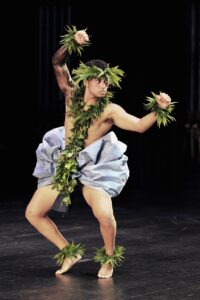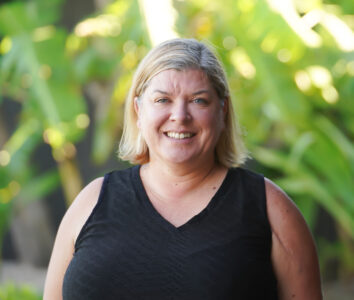Molokai scientist’s studies could help combat coral bleaching
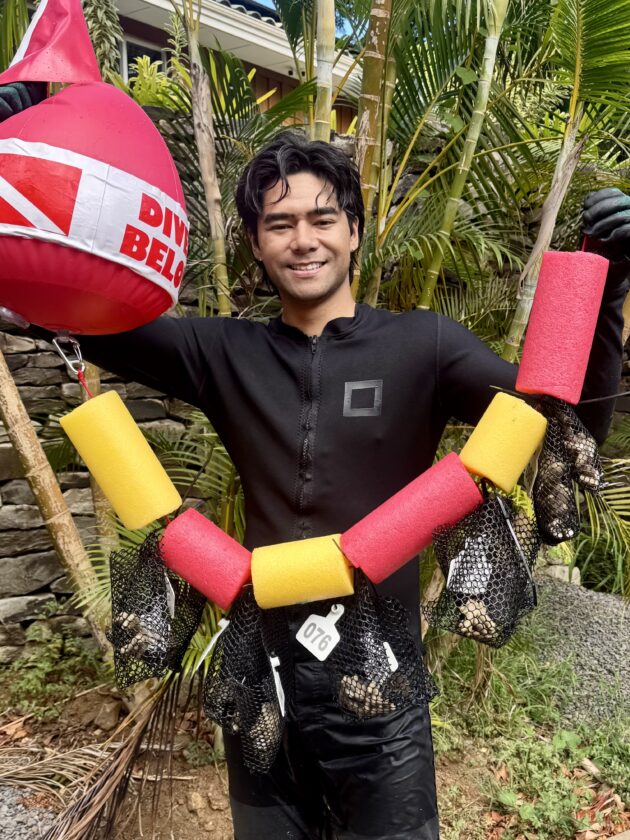
Kaiku Kaholoa’a uses various equipment to conduct dives and take reef samples for testing. He is looking for ones that show a high tolerance to rising temperatures in an effort to help save coral from bleaching. Photo courtesy Kaiku Kaholoa’a
Growing up on Molokai, Kaiku Kaholoa’a learned to dive and fish at coral reefs to gather food for his family and relatives.
Kaholoa’a now returns to the shores of his island as well as Maui to conduct studies to find and develop super reefs capable of withstanding higher temperatures in an attempt to save them in the future.
“It makes you feel connected and very special,” he said. “These are the same reefs my ancestors saw. Our cultural connection relies upon coral reefs.”
When he was younger, he learned about coral bleaching and the death of reefs due to rising ocean temperatures. Now his focus is on how to help Hawaii reefs survive coral bleaching.
A Ph.D. candidate at Stanford’s Biology and Ocean Departments, Kaholoa’a is conducting two months of field research with a grant from the National Science Foundation to find parts of reefs that are resilient to hotter temperatures. He is tracing DNA samples to identify reefs that release columns of larvae into the ocean.
“We call them mother reefs,” he said.
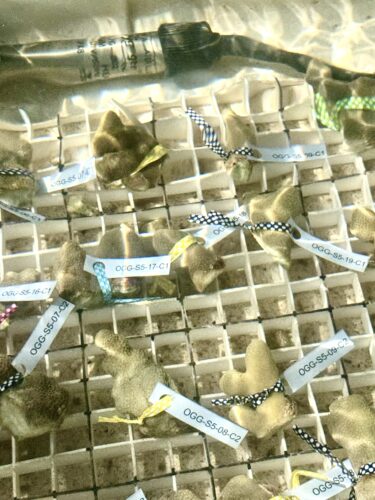
Part of the experiment is testing the coral pieces in open-air compartments to simulate corals getting warm at high noon. Photo courtesy Kaiku Kaholoa’a
Kaholoa’a said the goal is to map out the locations of the more climate-tolerant mother reefs in order to protect them and nurture them.
He said preservation to save these special areas makes more sense than trying to regrow coral reefs.
“We want to give them the best chance to grow and produce,” he said. “Protecting them is the key to coral preservation.”
Kaholoa’a said other studies have indicated Olowalu has some mother reef characteristics that might have spawned and helped to regrow reefs in other areas, but more studies need to be done to confirm their connection.
He’s been diving and taking samples of reefs in Olowalu, Kihei, Waihee and Honolua Bay, and he plans to dive in Papalaua, Kaanapali and southeast Molokai.
The reef fragments are taken and tagged to identify their location and put into igloo coolers at controlled high temperatures to determine their tolerance.
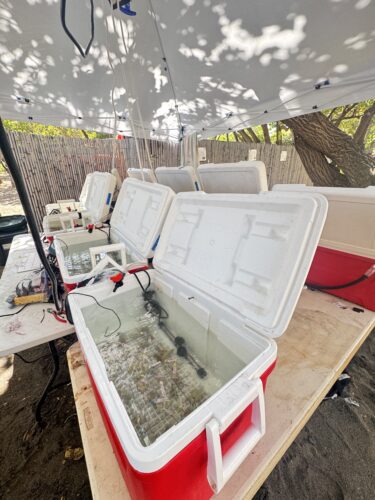
Samples of reef coral are tagged and stored as part of the field research to find and set aside pieces that show a higher tolerance to rising ocean temperatures. Photo courtesy Kaiku Kaholoa’a
Kaholoa’a said on the south shore of Molokai, his family members have a flat bottom boat they use to ride over the mudflats where they can lay nets and go crabbling. They ride beyond the flats into the ocean and reef to spear fish.
“The Kawela reef tract is one of the longest and healthiest,” he said.
Kaholoa’a also plans to use DNA studies to see if there is any connection between the Olowalu mother reef and the reefs on Molokai.
He said finding a connection between Molokai and Olowalu would help to show the inter-relatedness of reefs themselves and how the importance of saving one reef may help save another.


